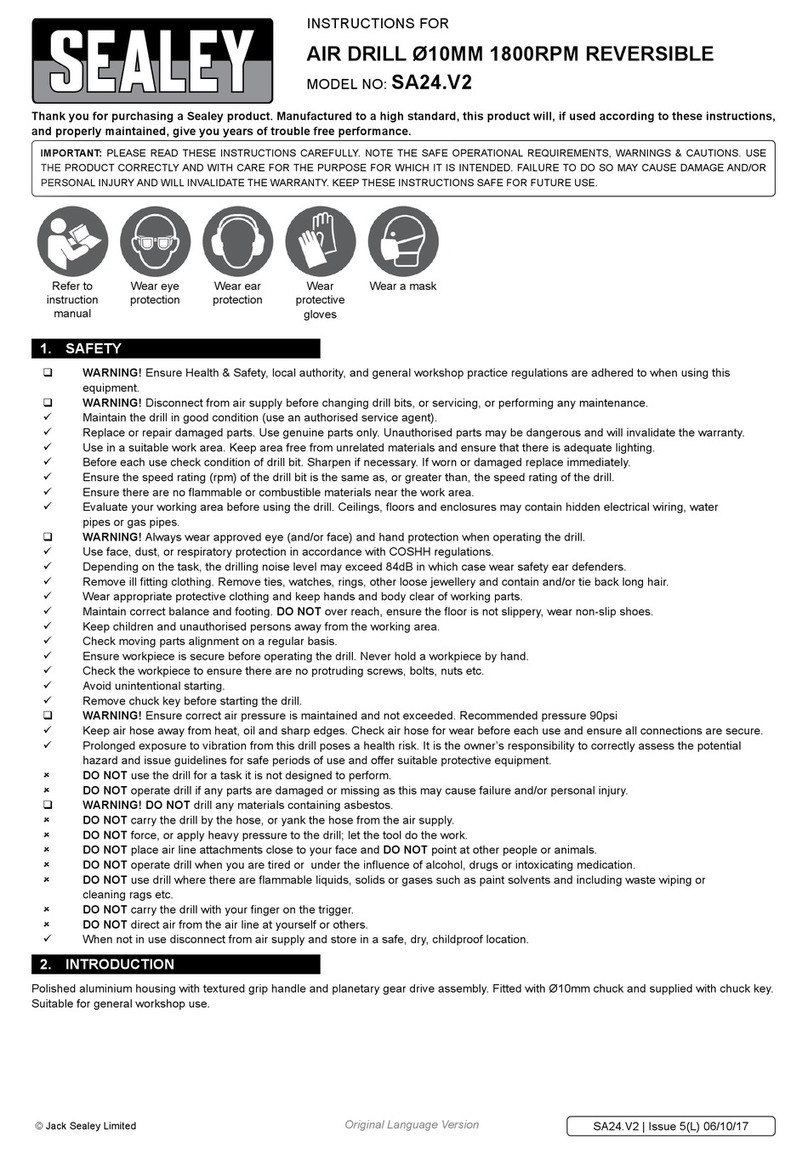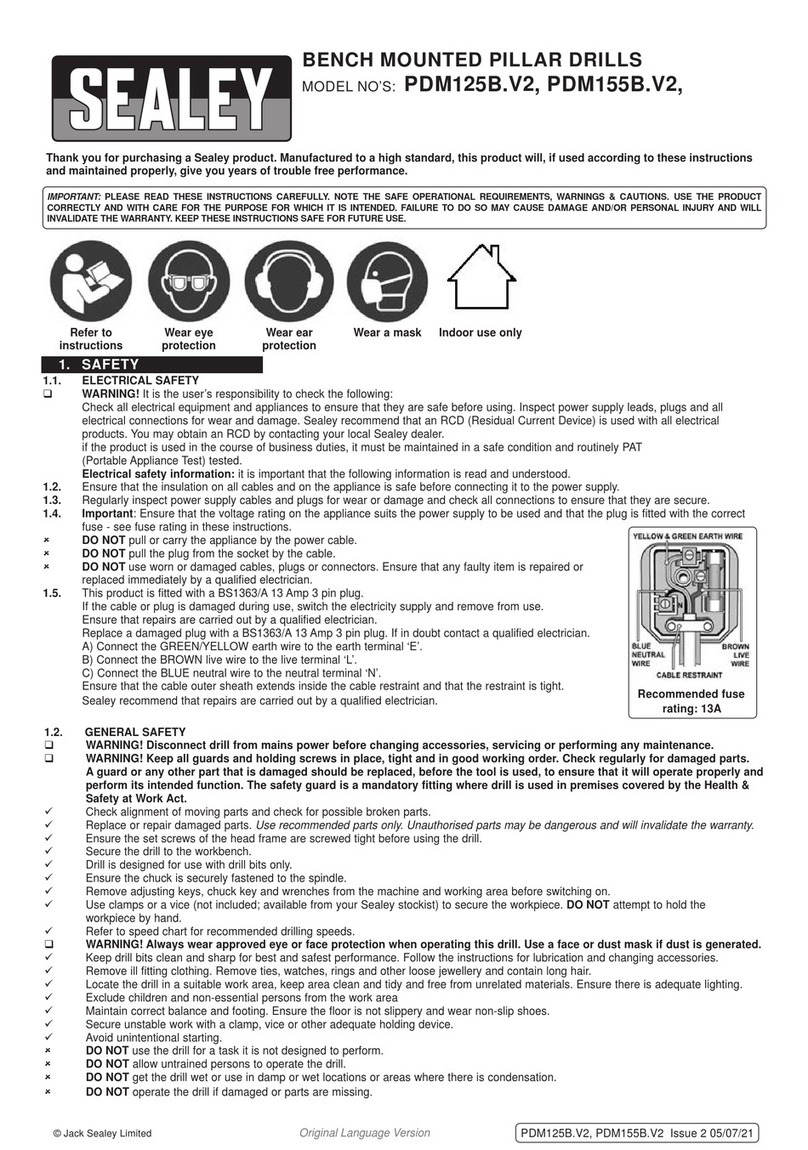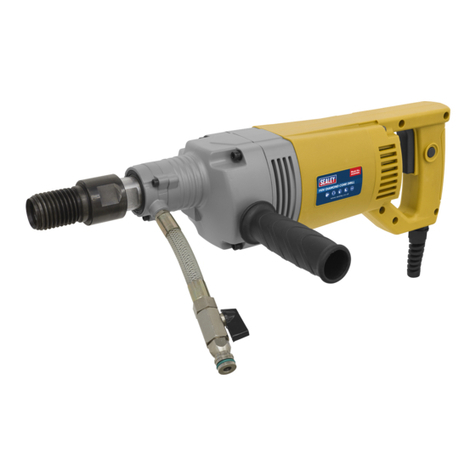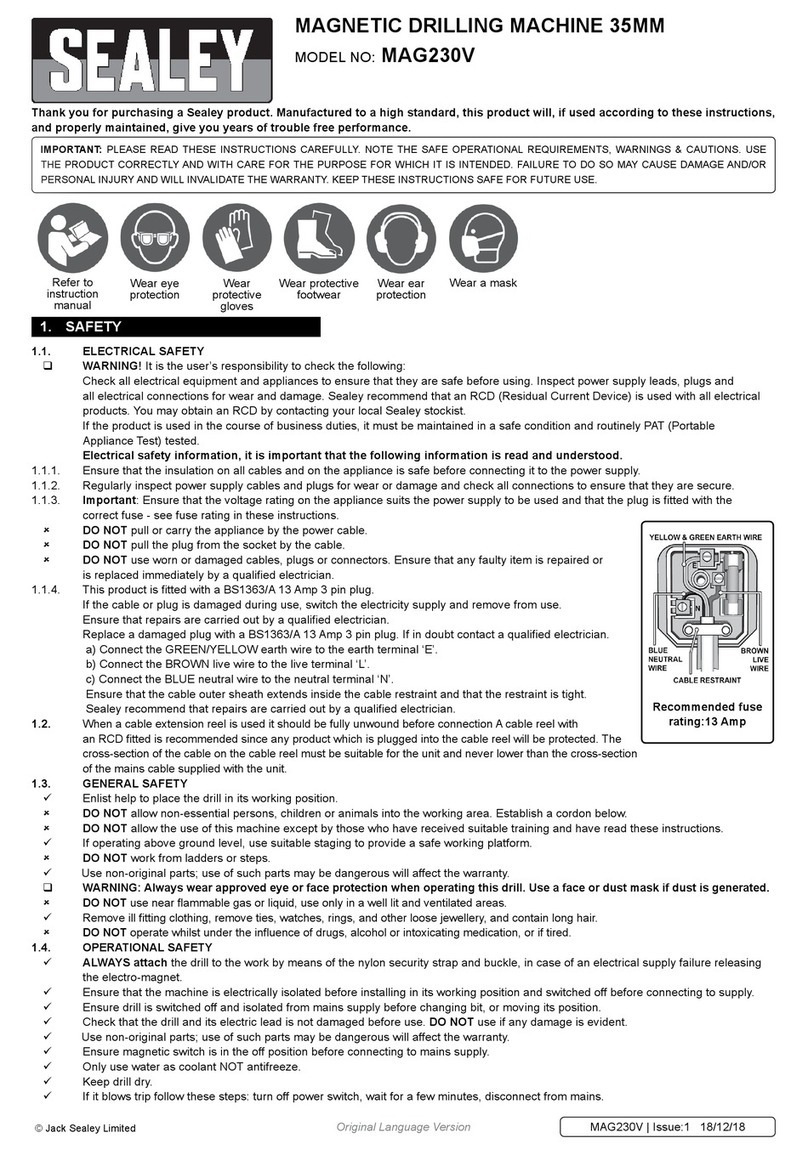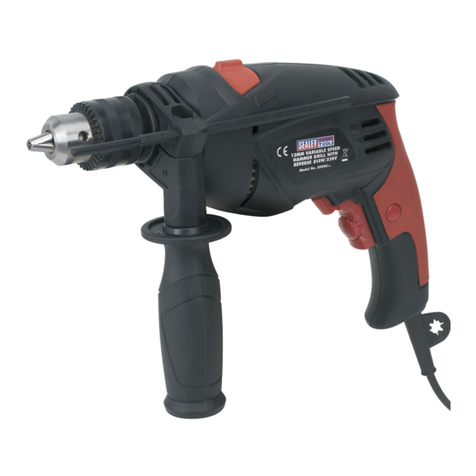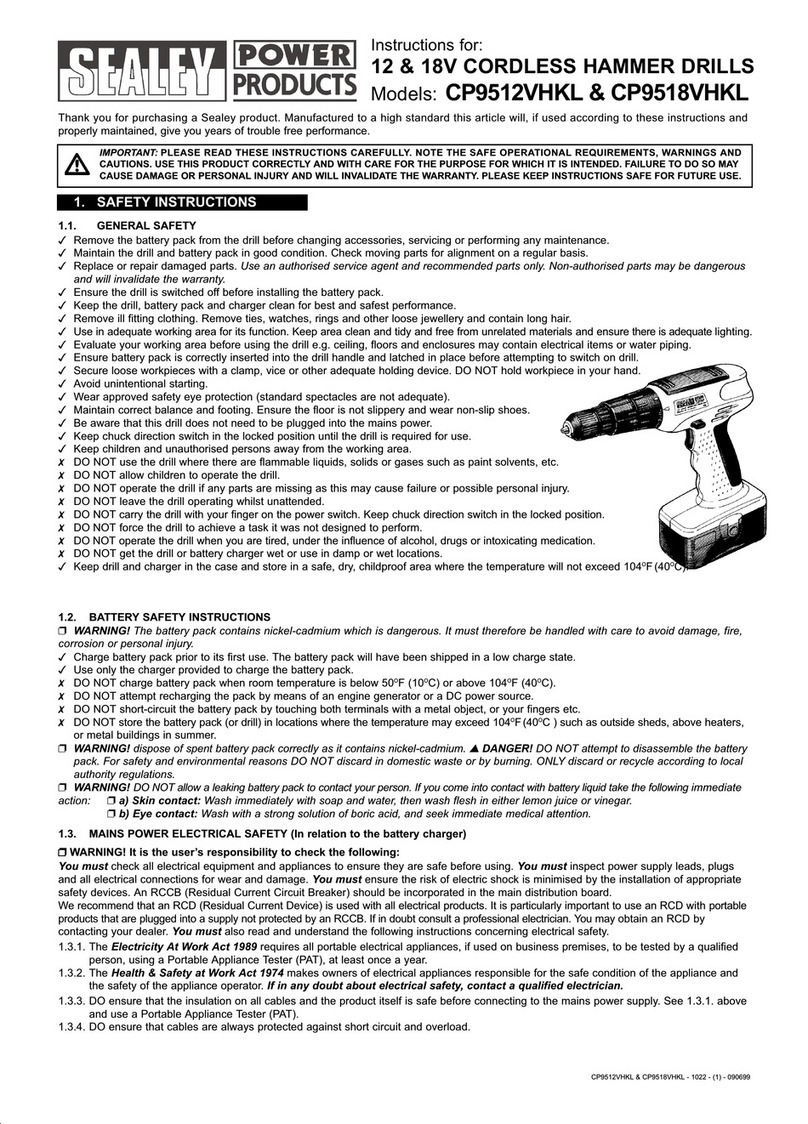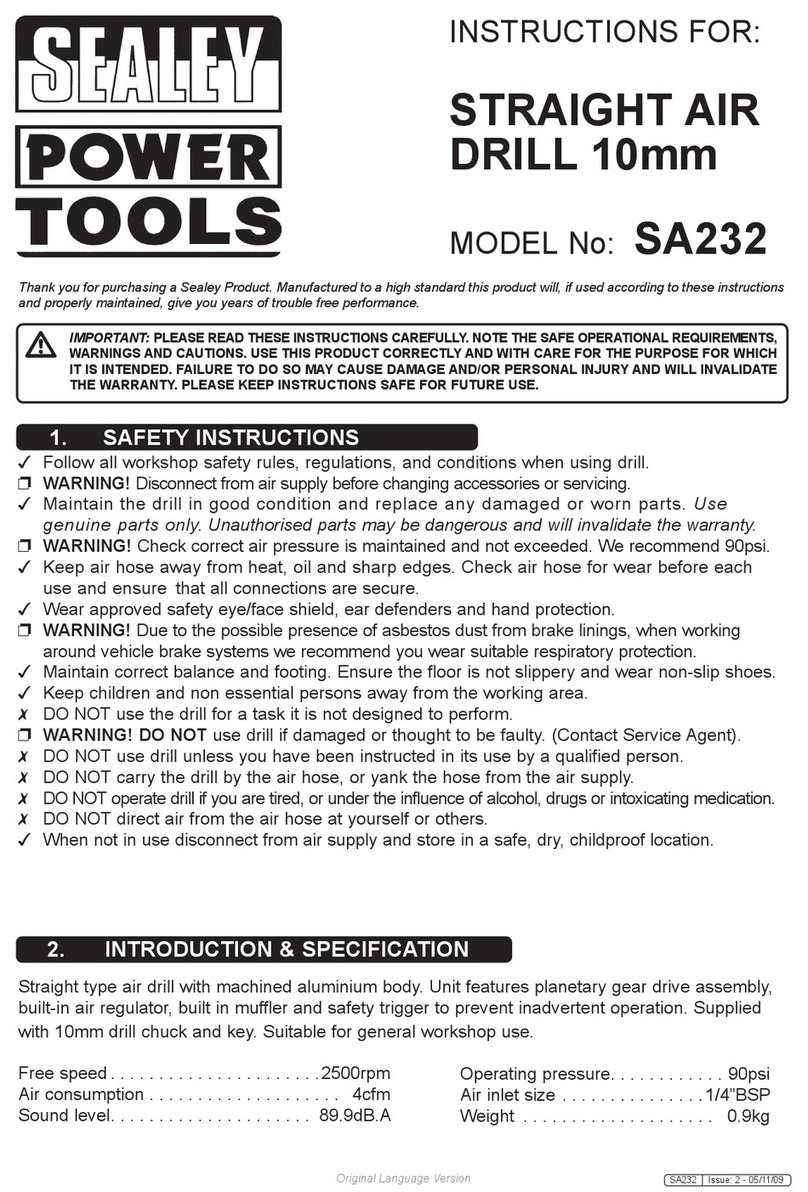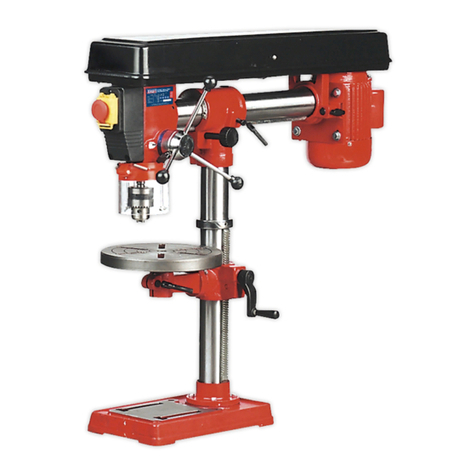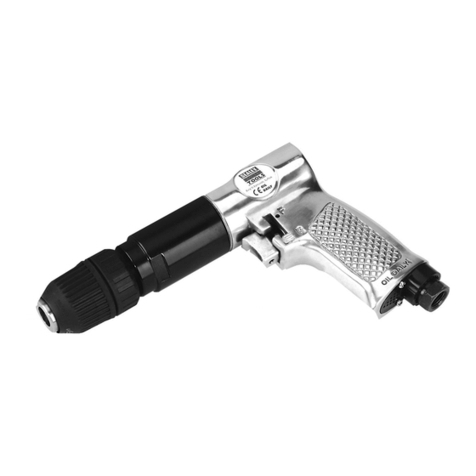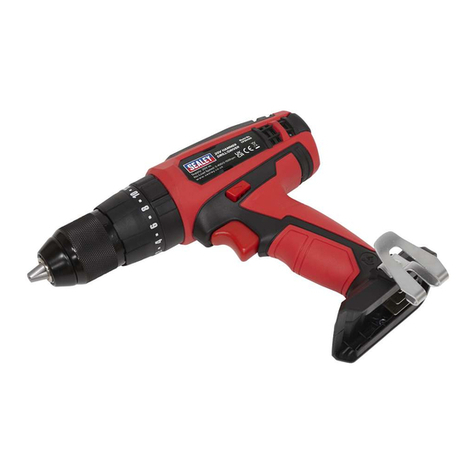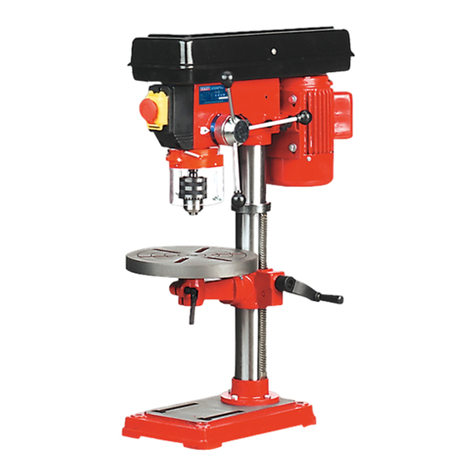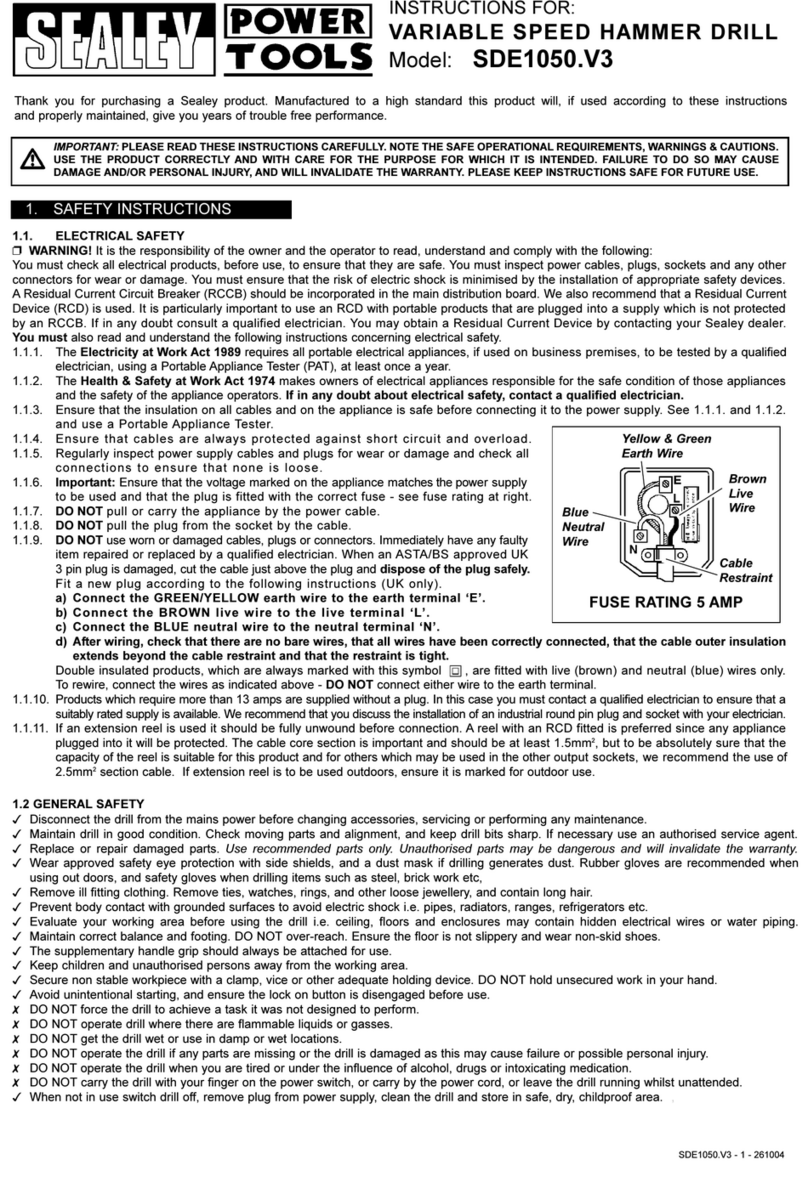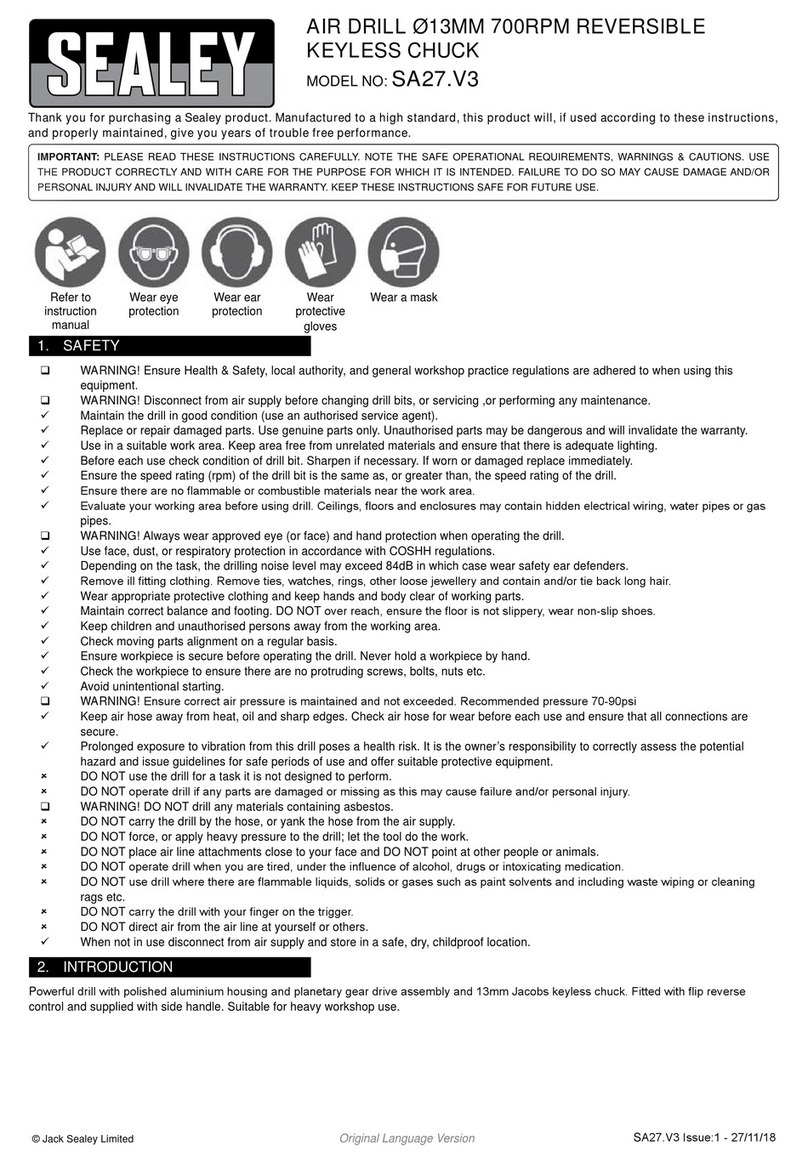
Original Language Version
© Jack Sealey Limited
9Keep hands and body clear of the drill bit when operating the drill.
9Maintain correct balance and footing. Ensure the floor is not slippery and wear non-slip shoes.
9Keep children and unauthorised persons away from the work area.
9Avoid unintentional starting and never leave the drill operating unattended.
8DO NOT use the drill for a task it is not designed to perform and ensure operators are trained to use the drill.
8DO NOT get the drill wet or use in damp or wet locations or areas where there is condensation.
8DO NOT use the drill where there are flammable liquids, solids or gases such as paint solvents and including waste cleaning rags etc.
1.3. DRILL SAFETY WARNINGS
9The work piece must be stationary and clamped or held against both the fence and the table.
9Drill only one work piece at a time. Stacked multiple work pieces cannot be adequately clamped or braced and may bind on the drill bit
or shift during cutting.
9 Ensure the drill is mounted or placed on a level, rm work surface before use. A level and rm work surface reduces the risk of
the drill becoming unstable.
9 Always use a clamp or a xture designed to properly support round material such as rods or tubing. Rods have a tendency to roll while
being cut, causing the drill bit to “bite” and pull the work with your hand into the drill bit.
9Let the drill bit reach full speed before contacting the work piece. This will reduce the risk of the work piece being thrown.
9 If the work piece or drill bit becomes jammed, turn the drill o. Wait for all moving parts to stop and disconnect the plug from the
power source. Then work to free the jammed material. Continued drilling with a jammed work piece could cause loss of control or
damage to the drill.
9Never touch the drill bit or moving parts during use.
9Never start the drill when the drill bit is in contact with the work piece.
9The drill must be secured. A drill that is not properly secured may move or tip over and may result in personal injury.
8DO NOT Drill pieces that are too small to be clamped securely. Holding the work piece by hand during operation may result in personal
injury.
8DO NOT Wear gloves. Gloves may be entangled by the rotating parts or chips leading to personal injury.
9Keep your hands out of the drilling area while the tool is running. Contact with rotating parts or chips may result in personal injury.
9Make sure the drill bit is rotating before feeding into the work piece. Otherwise the drill bit may become jammed in the work piece
causing unexpected movement of the work piece and personal injury.
9 When the drill bit is jammed, stop applying downward pressure and switch o the tool. Investigate and take corrective actions to
eliminate the cause of the jam. Jamming can cause unexpected movement of the work piece and personal injury.
9Avoid generating long chips by regularly interrupting downward pressure. Sharp metal chips may cause entanglement and personal
injuries.
9Never remove chips from the drilling area while the tool is running. To remove chips, move the drill bit away from the work piece,
switch o the tool and wait for the drill bit to stop moving. Use tools such as a brush or hook to remove chips. Contact with rotating
parts or chips may result in personal injury.
9LASER LIGHT. DO NOT stare into beam. Only turn laser beam on when tool is on work piece.
8 Never point the laser beam towards reecting surfaces and persons or animals. Even a laser beam with a low output can cause
damage to the eyes.
▲DANGER: Methods other than those specied here can result in dangerous radiation exposure.
8 Never open the laser module. Unexpected exposure to the beam can occur.
8 The laser may not be replaced with a dierent type of laser.
9Repairs of the laser may only be carried out by the laser manufacturer or an authorised representative.
2. INTRODUCTION
Great workspace illumination and accuracy thanks to the integrated LED light and laser. Easy-to-read LCD display shows rpm as well
as spindle travel for exact drilling depth. Parallel guide and vertical clamp on base. Superior control from two gears giving speed
adjustment from 170 to 2600rpm. Convenient quick release chuck.
3. SPECIFICATION
Model no..........................................................PDM10B
Base size ............................................330mm x 300mm
Collar Diameter: ............................................... Ø43mm
Column Diameter:............................................. Ø46mm
Drilling Capacity (Chuck Size):.............................13mm
Fuse Rating:.............................................................13A
Integral Work Light: ..............Yes, Including Laser Guide
Maximum Distance Spindle to Base:..................280mm
Motor Power (Start):..................................710W(900W)
Number of Speeds: 2 Variable Speed Range : First : 170-880/min. Second : 490-2600/min
Overall Height:...................................................660mm
Spindle Travel:...................................................100mm
Supply:...................................................................230V
Swing:................................................................250mm
4. CONTENTS
1 drilling machine 1 clamping lever (Fig1.6)
1 quick release clamp (Fig1.2) 1 depth stop (Fig1.7)
1 base plate (Fig1.1) 1 hex key, 4 mm (Fig1.19)
1 guide / stop (Fig1.16) 1 open-ended spanner (at), 16 mm
1 handle (Fig1.8) 1 screw bag: 4 screws M8 x 50, 4 nuts M8, 8 washers
1 chuck guard (Fig1.13) 1 operating manual
2 screws 3.0 x 12
PDM10B Issue:2 (3) 06/03/23
